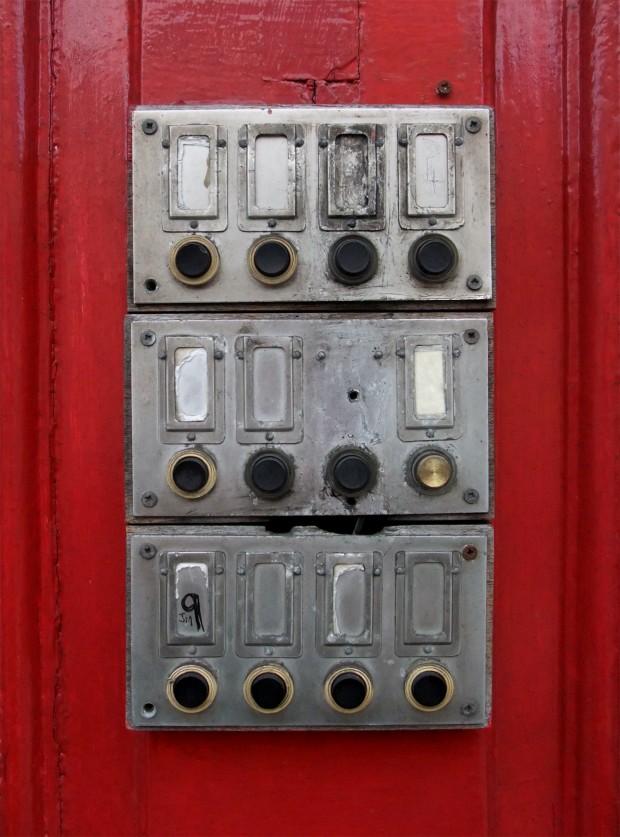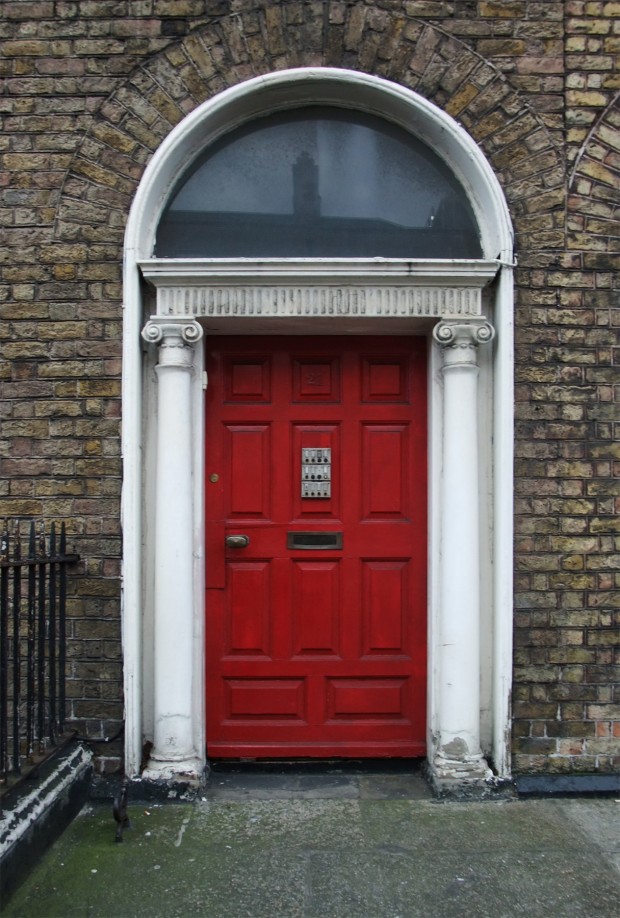It’s not the most well-maintained door on Leeson Street – the crumbling bases on the ornamental columns are a little sad – but I like the doorbells as a centrepiece. They’re very ordinary, well-used doorbells and it suggests someone was holding three rows of them, trying to figure out where to place them around the brick and columns, when they spotted the blank panels right in the centre. I’ve a habit of glancing at doorbells in areas with lots of buildings subdivided into flats, seeing how many homes might fit at one address.
But imagine taller buildings. Really tall ones, with dozens of addresses inside. Really tall ones that, inexplicably, forego the keypad dialling most complexes use, where you punch in numbers to dial your friend’s bell.
The door turns into a giant control panel with a sea of numbers laid out in a grid. Kids living nearby cry with happiness, seeing an opening for better-value pranks: fifty bells, one mad sprint away around the corner. Visitors panic and give up, or they use phones, skipping the bells entirely. The bells become a filter, cutting the flats off from the city because the only people who’ll ring are uninvited – physically ex-directory. The city gives up, and the bells become ornamental, appealing for their geometry but just a reminder of an obsolete means of communication.



